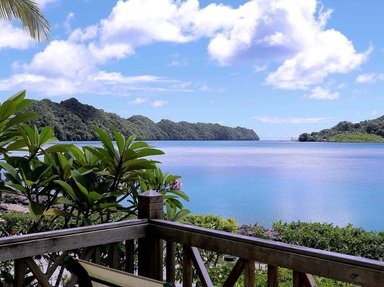Quiz Answer Key and Fun Facts
1. Palau is the westernmost archipelago in the Caroline Islands, but in 1978, this country decided to break away from the Caroline Islands and in 1994, it became an independent state. Why?
2. The highest land point in the Palau islands is 242m tall, which is very high for a series of coral islands. It is located on the island of Babelthuap, and is near to the capital of Koror. What is the name of this mountain/hill?
3. The official name for Palau (in English) is 'Republic of Palau'. Palau, however, has an official name in the local language of Palauan as well. What is the official name for Palau in Palauan?
4. Palau is a country separated into 16 states. These states are as follows: Aimeliik, Airai, Angaur, Hatobohei, Kayangel, Koror, Melekeok, Ngaraard, Ngarchelong, Ngardmau, Ngatpang, Ngchesar, Ngeremlengui, Ngiwal, Peleliu (Beliliou), and Sonsoral. English and Palauan are the official languages in 13 of these 16 states, but three of these states opt to use different tongues for their official languages. Which three states DO NOT use English and Palauan as their official languages?
5. One of the major attractions in Palau is the famous 'Jellyfish Lake'. What is special about the jellyfish that live in this lake?
6. Palau is home to the famous 'Rock Islands', a series of more than 200 islands which are uninhabited and are almost completely covered in vegetation. Often described as 'mushroom shaped', the only spot of these islands which is not covered in foliage are the small, sandy beaches. From what kind of rock are these islands made?
7. The flag of Palau features a light blue background with a bright yellow disc, shifted slightly to the hoist-side. What does this yellow disc represent?
8. Koror was the capital of Palau when it gained independence on 1st October 1994. Twelve years later, on 7th October 2006, ______ became the capital of Palau.
9. In 1994, the same year that it gained independence, Palau was accepted into the United Nations. This made Palau the ...th member of the U.N. What is the missing number?
10. Palau is a country located in the Northern Hemisphere. Is this statement true or false?
Source: Author
Flynn_17
This quiz was reviewed by FunTrivia editor
minch before going online.
Any errors found in FunTrivia content are routinely corrected through our feedback system.
